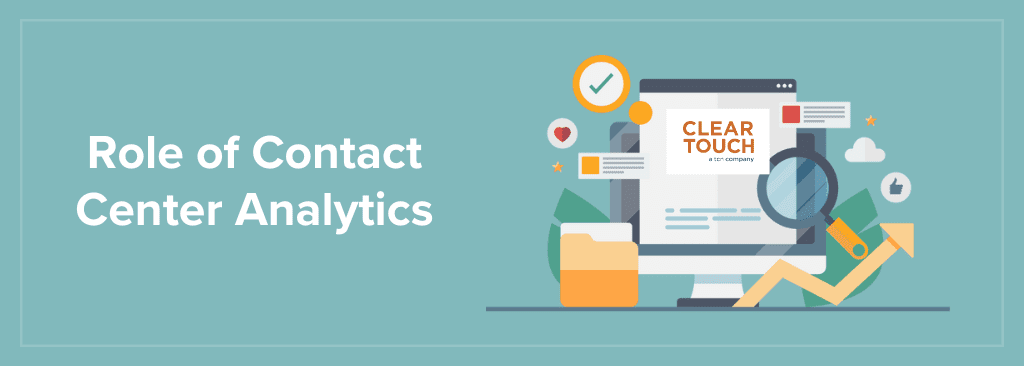The Role of Contact Center Analytics in Driving Customer-Centricity in BFSI
BFSI organizations are turning to contact center analytics solutions to gain a competitive advantage, with consumers expecting seamless and personalized services.
Reporting offers invaluable insights into customer interactions, preferences, and sentiment – empowering organizations to deliver superior experiences across every touchpoint.
Key Drivers for Using Contact Center Analytics Include:
Prioritizing Customer Experiences
According to recent studies, 89% of consumers have switched to a competitor following a poor customer experience (Source: Forbes)
According to a survey by PwC, 73% of consumers consider customer experience an important factor in their purchasing decisions.
Recognizing this trend, BFSI organizations are placing greater emphasis on enhancing customer experience to retain existing customers and attract new ones.
For example, leading banks have implemented real-time analytics solutions to track customer interactions across various touchpoints such as call centers, mobile apps, and social media platforms.
By analyzing customer feedback and sentiment in real-time, these organizations can identify pain points, address issues promptly, and deliver personalized services tailored to individual preferences.
Integration of Omnichannel Analytics
The rise of digital channels such as mobile banking, web chat, and social media has revolutionized how customers interact with BFSI organizations.
To meet the evolving needs of customers, BFSI contact centers are adopting omnichannel analytics solutions that integrate data from multiple channels to provide a unified view of customer interactions and behaviors.
For instance, a leading insurance company implemented omnichannel analytics to track customer journeys across the web, mobile app, and social media platforms.
As a result, the company achieved a 20% reduction in customer churn by identifying and addressing friction points in the digital experience, increasing customer satisfaction by 20%, and improving first-call resolution rates by 15%.
Compliance and Risk Management
Given the stringent regulations governing the industry, ensuring regulatory compliance remains a top priority for BFSI organizations.
Contact center analytics solutions play a crucial role in helping organizations comply with industry regulations such as the Payment Card Industry Data Security Standard (PCI DSS), General Data Protection Regulation (GDPR), and Markets in Financial Instruments Directive (MiFID II).
For example, a leading bank deployed speech analytics software to monitor customer interactions for compliance breaches and detect potential instances of fraud.
The bank could effectively identify unauthorized transactions and mitigate compliance risks by analyzing real-time voice recordings.
AI and Machine Learning Adoption
Artificial intelligence (AI) and machine learning (ML) technologies are revolutionizing BFSI contact centers by enabling organizations to automate processes, predict customer behavior, and optimize agent performance.
For instance, a prominent credit card company implemented a chatbot powered by natural language processing (NLP) to handle customer inquiries and provide personalized recommendations.
The chatbot uses ML algorithms to analyze customer interactions and learn from past interactions to improve its responses over time.
As a result, the company reduced average handling times by 30% and increased customer satisfaction scores by 25%.
Enhanced Security and Fraud Detection
With the increasing prevalence of cyber threats and fraudulent activities, BFSI organizations are investing in advanced analytics capabilities to enhance security and fraud detection in customer interactions.
Contact center analytics solutions leverage advanced techniques such as anomaly detection, voice biometrics, and behavioral analysis to identify suspicious activities and protect sensitive data.
For example, a leading insurance provider implemented a fraud detection system that analyzes voice patterns and speech characteristics to detect potential instances of fraud during customer calls.
By flagging suspicious calls for further investigation, the company was able to reduce fraud losses by 40% and improve its overall security posture.
Demand for Predictive Analytics
Predictive analytics is gaining traction in BFSI contact centers to forecast customer behavior, anticipate service demands, and optimize resource allocation.
By analyzing historical data and trends, predictive analytics solutions help organizations make informed decisions, improve operational efficiency, and drive business growth.
For example, a multinational bank implemented a predictive analytics platform to forecast call volumes and allocate resources accordingly.
By accurately predicting peak call times and staffing levels, the bank reduced wait times for customers and improved service levels by 20%.
Agent Performance Optimization
Contact center analytics solutions are crucial in monitoring and optimizing agent performance to enhance productivity, customer satisfaction, and retention.
For instance, a leading brokerage firm deployed a performance analytics dashboard that provides real-time insights into agent KPIs such as call resolution rates, average handling times, and customer satisfaction scores.
By identifying top-performing agents and coaching opportunities, the firm improved agent performance by 25% and increased customer retention rates by 15%.
Adopting advanced contact center analytics drives business success and enhances customer experiences in the BFSI sector.
Organizations can personalize services, ensure compliance, mitigate risks, and optimize operations by leveraging real-time insights and predictive analytics.
As customer expectations evolve, BFSI organizations must embrace contact center analytics as a strategic imperative to stay ahead of the curve and deliver unparalleled value to their customers.
With the right tools and strategies, BFSI organizations can unlock new opportunities for growth, innovation, and competitive differentiation in an increasingly digital and customer-centric landscape.
